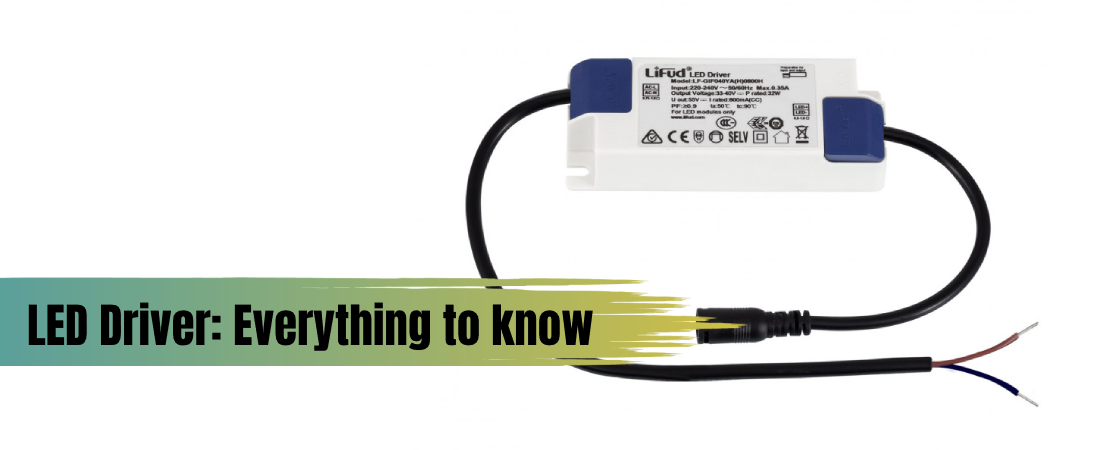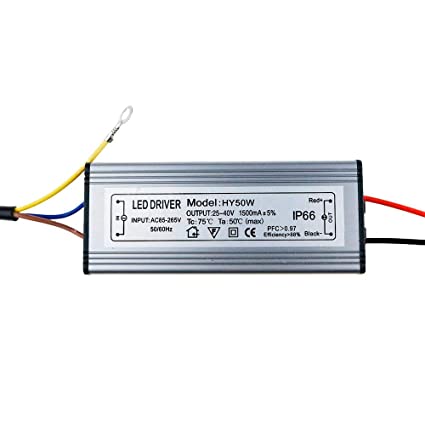
Lighting has come a long way with technological developments moving the lighting industry forward. Incandescent lights have been around longer, […]

LED drivers, what are they? Simply put, a driver is an electronic circuit that converts AC power to A\DC power. But there’s so much more to it than that! In this post, we’ll explore the different types of drivers and their applications. We’ll also look at some factors you need to consider when choosing a driver for your project. So whether you’re just starting out in the world of LEDs or you’re a seasoned pro, read on for all you need to know about LED drivers!
When we talk about humans alternating traditional technologies with modern ones, we cannot ignore Light Emitting Diodes or LEDs, the most popular source of light.
LED lights are one of the fastest growing items used in households due to their overall cost efficiency, longer lifespans and are environment friendliness.
One major disadvantage, however, associated with their use is their high and rapid heat generation.
Unlike most electrical appliances that we use, LEDs (which are ‘semiconductors’ and not ‘conductors’ like other electrical appliances) consume more current when hot.
The longer the time you use an LED, the hotter it will get, and the greater the current drawn – which results in further heating of the LED. This continuous heating will ultimately destroy the LED and render it useless.
However, a simple solution can be used to tackle the heat problem. An LED Driver is used with the main function ofproviding protection to the LED bulbs against current and voltage fluctuations
This article will discuss the details of an LED Driver and try to answer some general queries related to it.
How to install an LED Driver?
An LED Driver is a device that regulates the power supply to an LED light and therefore ensures that constant current is supplied to the LED. This prevents the overheating of the LED and therefore protects it from burning!!

LED Driver have several important roles, most importantly:
Although similar in operation, LED Drivers are different from transformers. Whereas transformers convert an “input” voltage to an “output” voltage, both functioning on an Alternating Current, LED Drivers convert AC to DC and subsequently supply a constant current to the LED.
Additionally, transformers would not respond to a connected LED as the voltage characteristics of an LED are too low compared to the corresponding characteristics of a transformer.
Transformers are often seen as linked to voltage, unlike LED Drivers whose functioning is current oriented.
A conventional power supply employs transformers for its function and is therefore also different from LED Drivers, as it is a source of constant Voltage.
Effectively, when a LED light heats up, a LED Driver won’t change the current supplied and thus it will prevent further heating, however, a conventional power supply would change the current (as their function is voltage-dependent ) and subsequently damage the LED.
Yes. It is almost imperative for you to use an LED Driver along with an LED light. This is because LEDs cannot function on AC, and without a Driver, the LED will be nonfunctional.
Also, an LED driver is protective equipment which protects the LEDs from overheating. Without an LED Driver, the LEDs would burn and become useless.
No. LED Drivers are not that expensive, and even good quality drivers can be affordable.
There are two types of LED Drivers:
For LED bulbs/lamps used for domestic purposes, the LED Driver is fitted within the appliance itself. There is no need to externally hook an external LED Driver.
An External LED Driver, as the name suggests, is connected externally to an LED light. This type of LED Driver is generally used for commercial purposes.
External LED Drivers are split into 2 categories, based on their method of operation:
These drivers, as mentioned earlier, supply a constant current.
These drivers supply a constant voltage. But, it still achieves its function of providing Constant Current, as it is connected to an electrical device called the ‘resistor’.
Constant Current Drivers are the most common and most preferred type of LED Driver. Constant Voltage Drivers are typically used when the LED lights they supply have low power or when multiple LED lights are connected, such as in an LED Strip.
With a constant voltage driver, every individual LED in the strip is ensured a constant supply of current by its connected resistor. So, in this case, a proper supply of Voltage is necessary.
There is a third type of LED Driver called AC LED Driver.
An AC LED Driver is connected to an LED that has an existing internal driver.
As mentioned before, transformers generally can not feed LED lights as the voltage characteristics of an LED are too low compared to the corresponding characteristics of a transformer.
An AC LED Driver is just like a transformer, with a sole difference in that it operates in low ranges of values, making it suitable for running LED lights.
There is a large variety of different types of LED Drivers available on the market, so thorough planning and selection are important for the proper operation of the lighting system.
Constant Voltage/Constant Current:
A lot of people get confused whether to buy a constant current or constant Voltage LED Driver.
As a general rule, if you have High Power LEDs, constant current LED Drivers are more suitable, and for Low Power LEDs and LED strips, constant voltage LED drivers are used.
This is because the chances of overheating are greater in High power LEDs, so it is essential to regulate the current supply, while in low-powered LEDs, overheating is not a major issue and can be prevented by controlling the voltage itself.
Also, LED strips contain resistors placed at appropriate locations which regulate the current. Thus, a Constant Current LED Driver is not required.
When connecting multiple LEDs, Constant Current Drivers are used in the case of series wiring and connection, while Constant Voltage Drivers are used in case of “parallel” wiring.
LED voltage:
Each LED type can operate within a fixed voltage range, known as the forward voltage, and every driver has a specific output voltage. Thus when choosing an LED driver, it is important to make sure that the voltage of both the LED driver and LED match.
LED current:
Similarly, each LED has a fixed range of current for its operation, known as the forward current, and each driver can supply a specific output current.Therefore it is also important to make sure that the current of both match.
Keep in mind that both the voltage and current criteria should be met when selecting the driver. Failure to meet even one of them may result in improper functioning.
LED Wattage/Power:
As a general rule, the LED Driver should have 10%-20% higher wattage capacity (or power consumption capability) than the wattage rating of the LED it supplies.
Electrical Power supply at your location:
The electricity supplied to you also has a specific voltage associated with it, as it can be a decisive factor.
Even though the LED drivers sold in a specific geographical location cater to the power supply in that area, it is never a bad idea to cross-check the working range of the LED Driver.
Dimming Capability and related features :
Dimmable LED lights have an optional feature of brightness adjustment, which is generally clearly stated on the LED box or catalog. The LED driver should be suitable for the dimming functionality.
Additionally, features like “pulsation” (which means the flickering of LEDs) also require a specific type of LED Driver.
Power Factor:
Power Factor is a measure of how efficient an LED Driver is regarding electricity consumption and output, and can therefore be an essential factor in the purchase decision.
The higher the power factor, the more efficient a device is. Power factors greater than 0.9 are considered optimal for operation.
Efficiency:
Efficiency is the measure of what percentage of the power fed to an LED Driver is delivered to the LED, and it’s an important factor to address for the effectiveness of operation.
Size and other Physical Attributes:
This is one of the non-technical criteria to be considered before buying an LED Driver. One should make sure that the LED Driver is of appropriate size and shape and fits properly in its designated place.
Type of LED used:
Different types of LED lights have different features and can greatly affect the choice of LED driver, as they reflect on the voltage, current of the LED Driver and the corresponding characteristics. The choice between constant voltage and constant current LED Drivers is also based on the type of LED used.
Whether there is enough voltage
In situations where there isn’t enough Voltage to run LEDs, special types of LED drivers need to be bought, as they have the capability to overcome this limitation.
Whether to buy an AC LED Driver or not
AC LED Drivers are generally bought when multiple LED connections are needed for commercial or residential purposes. Using AC LED Drivers will reduce the number of electrical devices and hence the effective cost.
Cost vs. efficiency
The most efficient LED Drivers are often the most expensive, driving a lot of people to weigh these 2 features when selecting an LED Driver. It is generally not recommended to compromise on efficiency, although this decision is also driven by the purpose or function of the LED Driver. For example, if the LED driver is to be used on a commercial scale, then efficiency must be prioritized.
Installing an LED driver is not that complicated, however, it is always recommended that the installation is handled by an expert technician.
An LED driver consists of 2 sets of wires:
Input wires– a set of 3 wires to be connected to an electrical socket. They are colour-coded:
Black Wire/Positive wire- The Black Wire is connected to the Live Outlet of the socket
White Wire/Negative wire- The White wire is connected to the Neutral Outlet of the socket
Green Wire/Earthing Wire- The Green Wire is connected to the Earthing Outlet of the socket
Output wires– a set of 2 wires to be connected to the LED, which are also colour-coded:
Black Wire/Negative wire- Connected to the correspondingly coloured wire/inlet of the LED
Red Wire/Positive wire- Connected to the correspondingly coloured wire/inlet of the LED
While most countries follow this color coding scheme, it might be different for your location and you should consult the official standards and an expert electrician for guidance.
Some LED Drivers don’t have loose input wires, but are fitted with plugs which could be installed easily.
LED Drivers are extremely important components of every LED system. Not only do they maintain the operation of the LEDs, but they also serve as an important safety device. Of the different types available, the customer should always study the requirements and characteristics carefully and make an informed decision, before consulting with an expert for the installation and operation of the system.